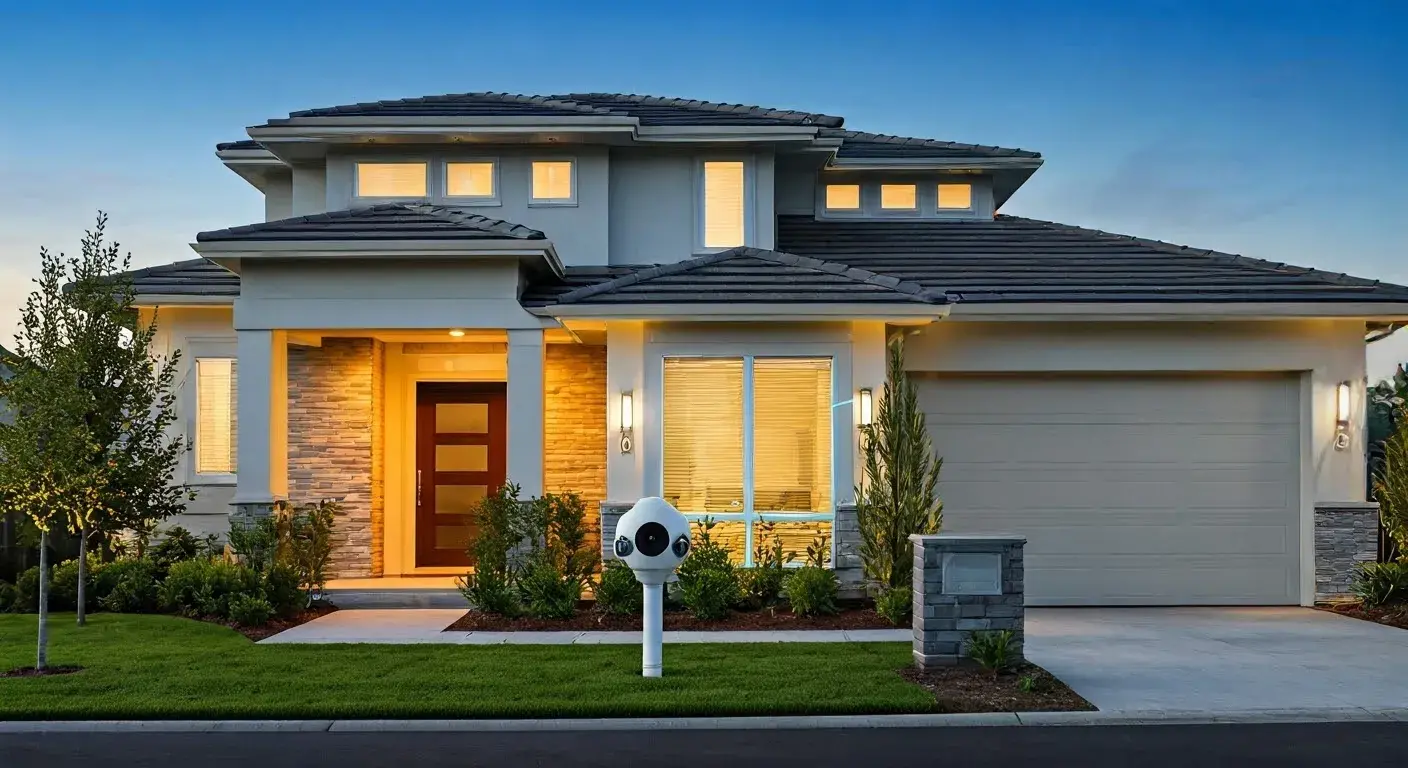The home security industry has undergone a remarkable transformation in recent years, driven by rapid advancements in technology and a growing demand for smarter, more personalized solutions. Among the most significant innovations shaping this evolution is the integration of biometrics. Once confined to high-security facilities or science fiction movies, biometric technology—such as fingerprint scanning, facial recognition, and voice authentication—has now become a cornerstone of modern home security systems. As homeowners seek greater convenience, reliability, and protection, biometrics offers a powerful tool to meet these needs. This blog explores the role of biometrics in the evolving home security landscape, its benefits, challenges, and what the future might hold.
What Are Biometrics in Home Security?
Biometrics refers to the measurement and analysis of unique physical or behavioral characteristics to identify individuals. In the context of home security, biometric systems use these traits to grant or deny access to a property. Common biometric identifiers include fingerprints, facial features, iris patterns, and even voiceprints. Unlike traditional security methods such as keys, PINs, or passwords, biometric data is inherently tied to an individual, making it nearly impossible to replicate or steal in the same way a key might be lost or a code guessed.
The adoption of biometrics in home security has been fueled by the proliferation of smart home devices. Today’s smart locks, video doorbells, and security cameras increasingly incorporate biometric features, offering homeowners a seamless and highly secure way to protect their properties. This shift represents a broader trend toward personalization and automation in the home security industry.
The Rise of Biometrics in Home Security
The integration of biometrics into home security systems didn’t happen overnight. Early biometric technology was expensive, complex, and largely reserved for government or corporate use. However, advancements in sensor technology, artificial intelligence (AI), and machine learning have made biometrics more affordable and accessible to the average consumer.
One of the first biometric features to gain traction in homes was fingerprint recognition. Fingerprint-enabled smart locks allow homeowners to unlock their doors with a simple touch, eliminating the need to fumble with keys or remember codes. Companies like Yale, August, and Kwikset have popularized these devices, blending convenience with robust security. More recently, facial recognition has emerged as a game-changer, thanks to its integration into video doorbells and security cameras from brands like Ring and Nest. These systems can identify family members, frequent visitors, or even potential intruders in real time.
Voice recognition is another biometric frontier making waves in smart homes. Paired with virtual assistants like Amazon’s Alexa or Google Assistant, voice-activated security systems can authenticate users and execute commands, such as locking doors or arming alarms, based on vocal patterns. Together, these innovations signal a shift from reactive security measures to proactive, intelligent systems tailored to individual households.
Benefits of Biometrics in Home Security
The appeal of biometrics lies in its ability to address many of the shortcomings of traditional security methods. Here are some key advantages driving its adoption:
- Enhanced Security: Biometric identifiers are unique to each person, making them far more difficult to forge than a key or password. This reduces the risk of unauthorized access due to lost keys or shared codes.
- Convenience: With biometrics, there’s no need to carry keys or memorize PINs. A quick scan of a fingerprint or face is all it takes to enter a home, streamlining the process for busy homeowners.
- Personalization: Biometric systems can distinguish between individuals, allowing for customized access permissions. For example, parents might restrict certain doors or rooms to children while granting full access to adults.
- Integration with Smart Homes: Biometrics pairs seamlessly with other smart home technologies, such as lighting, thermostats, and alarms, creating a cohesive ecosystem that enhances both security and comfort.
- Real-Time Monitoring: Facial recognition cameras and biometric sensors can alert homeowners to unfamiliar visitors or suspicious activity instantly, improving response times to potential threats.
These benefits resonate with a growing segment of consumers who prioritize both safety and simplicity. As a result, biometrics is no longer a luxury—it’s becoming a standard expectation in the home security market.
Challenges and Concerns
Despite its promise, biometric technology in home security isn’t without challenges. As with any emerging technology, there are hurdles to overcome before it can achieve widespread acceptance.
- Privacy Risks: Biometric data is deeply personal, and its collection raises concerns about how it’s stored, used, and protected. A data breach exposing fingerprints or facial scans could have serious implications, as these traits can’t be changed like a password.
- Accuracy and Reliability: Environmental factors—such as lighting conditions for facial recognition or dirt on a fingerprint scanner—can affect performance. False positives (granting access to the wrong person) or false negatives (denying access to the rightful owner) remain technical hurdles.
- Cost: While prices have dropped, biometric systems are still more expensive than traditional locks or cameras. This can deter budget-conscious consumers from adopting the technology.
- Ethical Questions: The use of facial recognition, in particular, has sparked debates about surveillance and consent. Homeowners may hesitate to deploy systems that could inadvertently monitor neighbors or guests without their knowledge.
- Hacking Vulnerabilities: Although rare, sophisticated hackers could potentially spoof biometric systems using high-quality replicas or digital manipulation, underscoring the need for robust encryption and multi-factor authentication.
Addressing these concerns will be critical for the long-term success of biometrics in home security. Manufacturers must prioritize transparency, user control, and cutting-edge safeguards to build trust among consumers.
The Future of Biometrics in Home Security
Looking ahead, the role of biometrics in home security is poised to expand even further. As AI and machine learning continue to evolve, biometric systems will become smarter and more adaptive. For instance, future facial recognition cameras might learn to distinguish between a homeowner’s typical behavior and unusual activity, such as a stranger lingering near the door. Similarly, voice recognition could evolve to detect stress or duress in a user’s tone, triggering an automatic alert to authorities.
Multi-modal biometrics—combining two or more identifiers, like fingerprints and facial scans—is another promising development. This approach enhances security by requiring multiple layers of authentication, making it exponentially harder for intruders to bypass. Imagine a smart lock that only opens after verifying both your face and your voice, offering a near-impenetrable barrier.
The Internet of Things (IoT) will also play a pivotal role in integrating biometrics with broader home systems. Picture a scenario where your biometric entry not only unlocks the door but also adjusts the thermostat, turns on the lights, and disarms the alarm—all tailored to your preferences. This level of automation could redefine the concept of a “smart home,” blending security with unparalleled convenience.
Moreover, as urbanization and remote work continue to rise, the demand for flexible, scalable security solutions will grow. Biometrics could enable temporary access for guests, delivery personnel, or housekeepers, with permissions that expire automatically after a set time. This adaptability makes it an ideal fit for the modern, dynamic lifestyle.
Conclusion
The home security industry is at a turning point, and biometrics is leading the charge toward a safer, smarter future. By offering unmatched security, convenience, and personalization, biometric technology addresses the evolving needs of homeowners in an increasingly connected world. While challenges like privacy and cost remain, ongoing innovation and consumer education will likely pave the way for broader adoption.
As we move deeper into the digital age, biometrics will continue to redefine how we protect our homes, blending cutting-edge science with everyday practicality. For homeowners, the question is no longer whether to embrace this technology, but how soon they can integrate it into their lives. In an industry where trust and peace of mind are paramount, biometrics stands out as a powerful ally—one that’s unlocking new possibilities, quite literally, at our fingertips.
Feel safe with the Home Security that you will get from professional security companies are as follows; Contact us at (888) 805-5456 to speak to a specialist and get a no-obligation quote.






